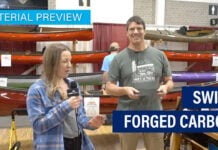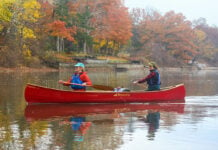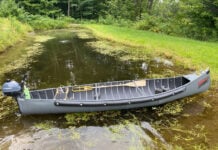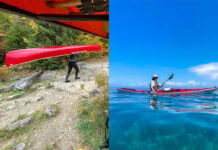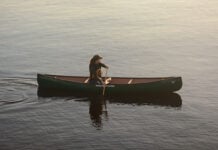The dugout slices neatly through the still grey water. Sleek and streamlined, it is 34 feet long and shaped from a single red cedar log. I am paddling with the Martin family, returning from a potlatch hosted by a neighbouring tribe to the north. Our paddles keep time to the beating of the drum as a woman’s voice rises above us, chanting the long falling notes of an ancient paddling song.
“We must be nearly back in town now,” I think, but the thick fog has us paddling blind. I wonder if there are people on the docks, hearing this paddling song that had been nearly silenced for a century.
Traditional canoe building: Afloat again
Joe Martin carved this canoe. He is in the stern, a wide-bladed steering paddle of stiff yew wood in his hands. He takes a deep breath and joins in the song, his powerful voice seeming to push back the fog as a dark shape looms ahead. Tall posts supporting grey docks appear and I see the outlines of people above, looking out at us.
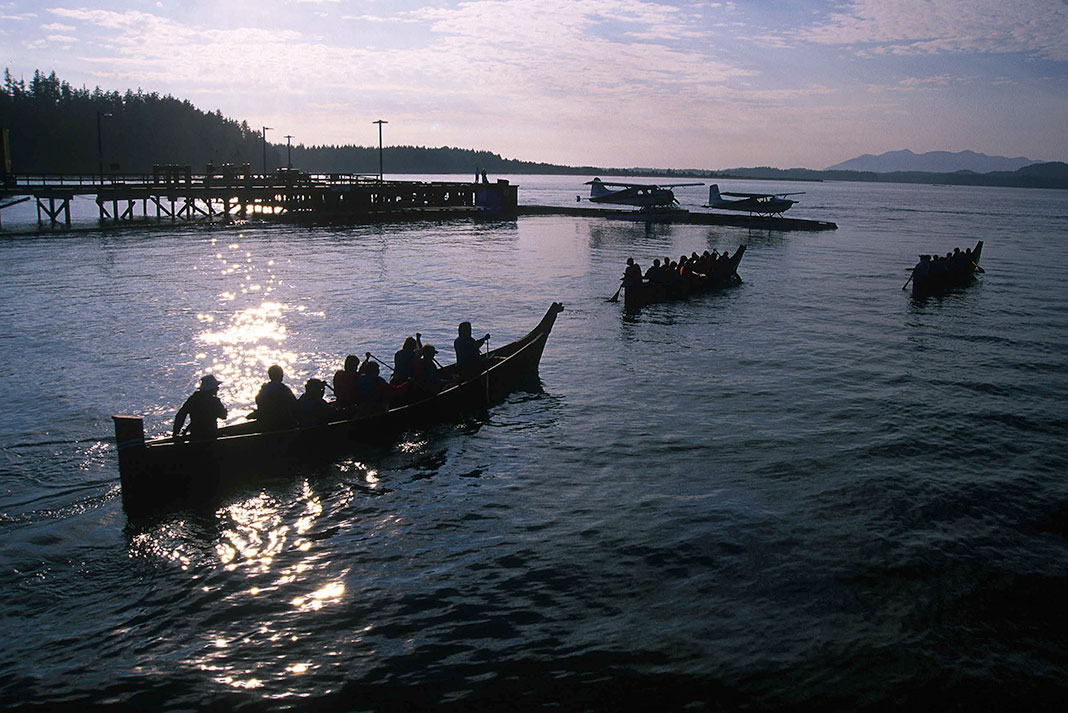
Joe’s voice is deep and rich. “I come from a long line of canoe carvers,” he tells me. “I learned the art of canoe building from my late father and my grandfathers, and from other elders who are now gone. I have a responsibility to pass on this knowledge.”
His black eyes are shaded by heavy brows, but they light up when he talks. “When I was just a young boy and my father was carving canoes he took us with him. I was not allowed to just stay home. I’d watch him work. That was my classroom I guess, although I didn’t realize it at the time.”
Joe is Tla-o-qui-aht, one of 17 tribes that make up the Nuuchah-nulth nation, the people who live “all along the mountains” in northernmost Washington State and along Vancouver Island’s wild outer coast. As a seafaring people, they were long famed for making some of the most seaworthy canoes on the coast. The canoe was their source of transportation: for travelling to visit neighbouring tribes, for seasonal migration, for making war, and for offshore whaling expeditions.
Cultural traditions under attack
The first Europeans who arrived on the West Coast in 1774 were greeted by a fleet of canoes. Within decades of that first contact, the West Coast native population was decimated by introduced diseases. A century later, the Canadian government passed the Indian Act, making native people legal wards of the state and relegating them to reserve lands. Children were removed to Christian missions and residential schools. Between depopulation and the loss of contact between children and their elders, the thread of traditional knowledge became frayed within scant generations. In many tribes the losses were too great; knowledge of things such as how to build canoes disappeared.
Joe has seen evidence of these losses first-hand. “I worked in logging camps when I was younger. As we were logging, we came across old canoes that were just shaped and left there. It wasn’t until some time later that I realized they were not just abandoned there. Those fellas were carving them and they probably died from the disease epidemics that affected the communities. That’s why they were left there.”
“If you can carve your own canoe, you don’t have to rely on anybody for anything.”
Realizing that few among their generation retained the canoe-building knowledge of the elders, Joe and his brothers knew that they had to keep carving canoes, both for the sake of their ancestors, from whom the knowledge came, and for their future. “The dugout canoe is one of the most important symbols we have of freedom, freedom of our people in our lands. One of the things that my late father said was, ‘If you can carve your own canoe, you don’t have to rely on anybody for anything.’ It makes you totally independent, which our people were before the Indian Act.”

Passing canoe building on to the future
Where the knowledge from their elders was incomplete, the Martin brothers researched, visiting museums and looking through historical documents. They ventured into the forests looking for giant trees, and learned both by their successes and by their mistakes—how to keep the wood from splitting, how to use power tools to speed the process, how to widen the canoe by steaming it.
The Martin brothers, along with their late father, have carved over 40 canoes. They’ve sold some of these canoes to neighbouring tribes and given away canoes at potlatches, helping to spread the knowledge that their family has maintained.
While this is a great satisfaction to Joe, he is even happier listening to the voice that cuts through the fog as we approach the dock. It is his daughter Gisele. Joe has passed the knowledge of his ancestors on to her. He now sees Gisele carrying the old teachings into the modern world. Three years ago she started a business taking tourists on cultural tours in her father’s hand-made canoes, paddling herself and her community out of the fog and toward a brighter future.
Jacqueline Windh is the author of The Wild Edge, a book of photos and words about the outer coast of Vancouver Island.
Joe Martin and his brothers keep the Nuuchah-nulth nation’s traditional canoe building methods alive. | Feature photo: Jacqueline Windh



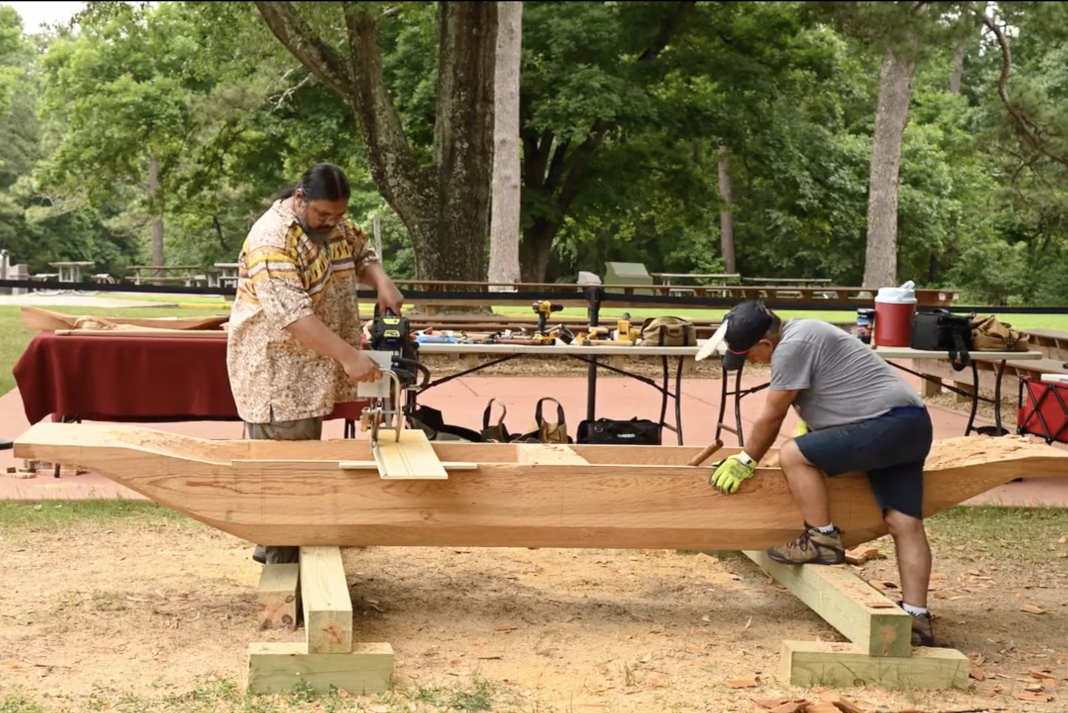


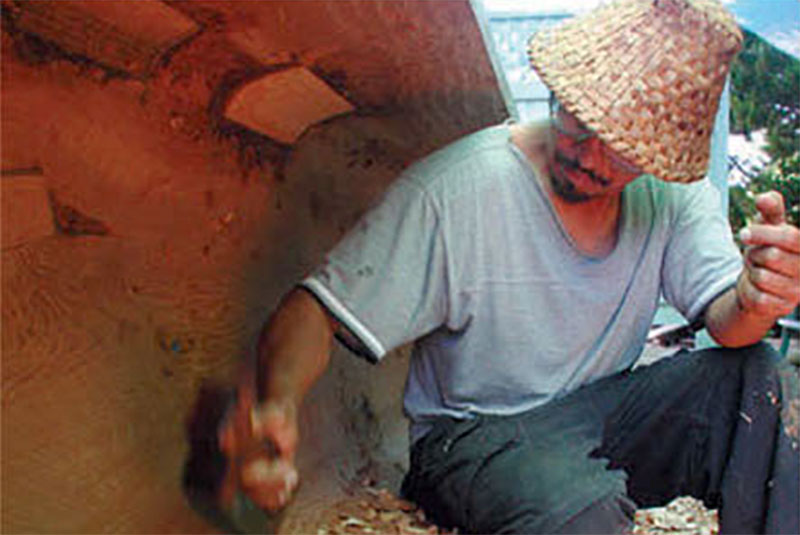
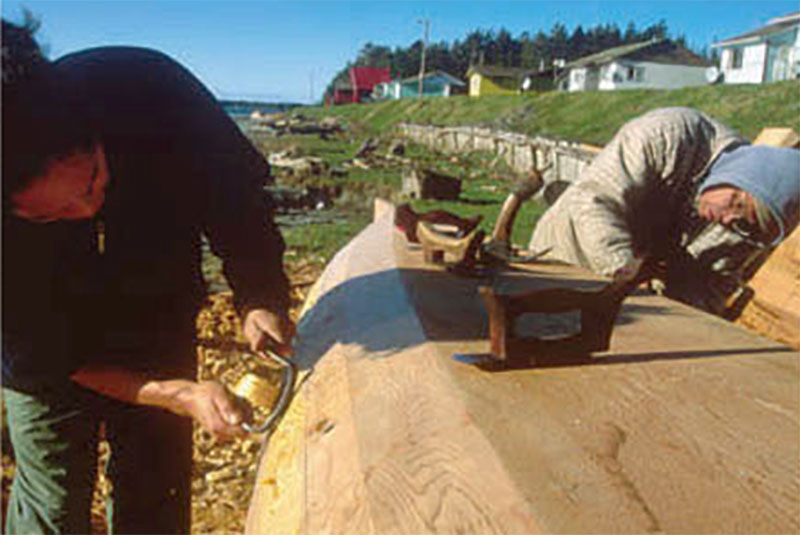
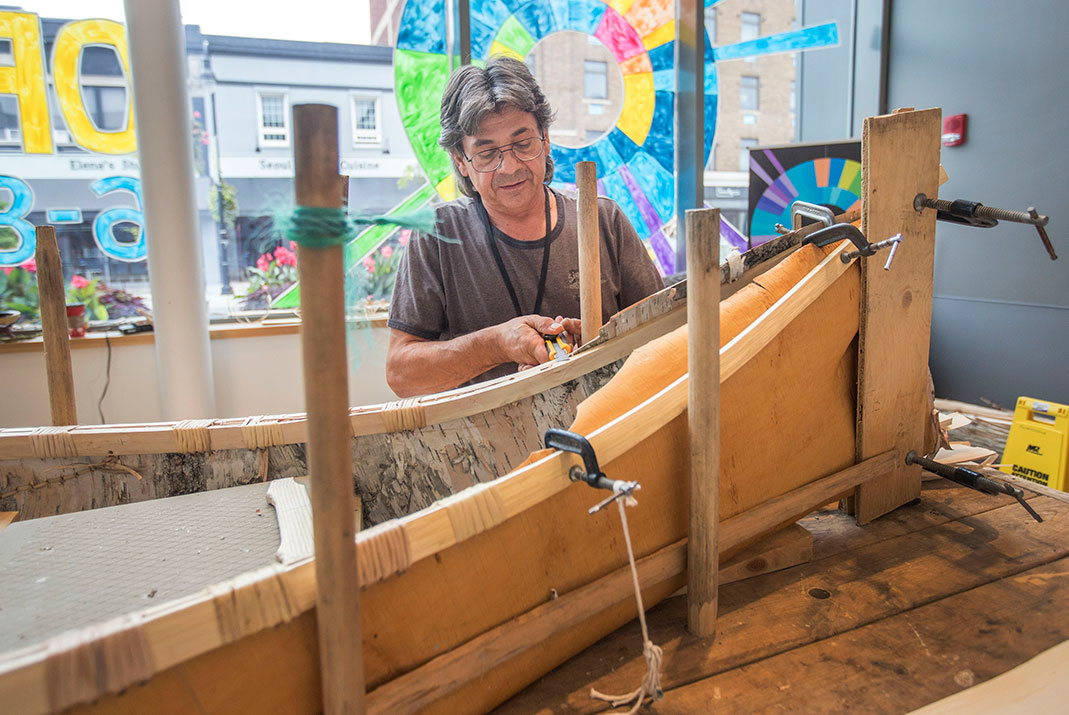
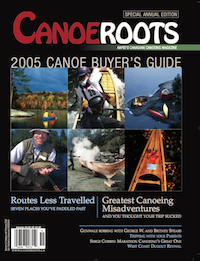 This article was first published in the Summer 2005 issue of Canoeroots Magazine.
This article was first published in the Summer 2005 issue of Canoeroots Magazine. 